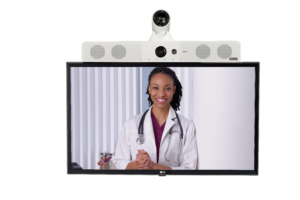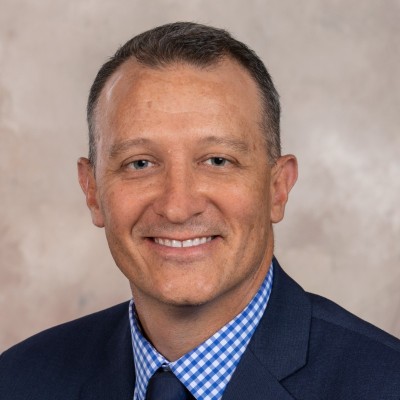Success Story
Lee Health Sees 20% Improvement in Patient Satisfaction and Efficiency Gains with Virtual Nursing

About Lee Health
Headquartered in Fort Myers, Lee Health is the largest not-for-profit public health system in Florida. Lee Health hospitals consistently rank in the top 1% for overall care nationwide.
The Challenge
Like many health systems, Lee Health lost a significant portion of its nursing workforce during and following the pandemic. To help offset chronic staffing challenges, the healthcare organization was interested in exploring Virtual Nursing as a way to expand the reach and efficiency of its nursing team, leveraging technology to bring experienced nurses into bedside care as a secondary, remote resource. To implement the hybrid care model, Lee Health would need to develop the program from the ground up while overcoming staff reluctance to change. It was essential that the program run within the health system’s Epic electronic health record system.
The Virtual Nursing Solution
Building on the success of other virtual care programs enabled through its partnership with Caregility, including Virtual Visits and Virtual Patient Observation, Lee Health leveraged technology solutions from Caregility to support the build-out of a Virtual Nursing pilot program.
Patient Population
The initial pilot population included patients from a Cardiac unit and select high-acuity Med-Surg patients.
Telehealth Equipment
Caregility APS250C mobile carts in patient rooms, Caregility Cloud™ services and care applications with Epic integration.
Staffing Model
Insourced, drawing virtual nurses from floor nurse rotations, using a 1:10 virtual nurse-to-patient ratio.
Lee Health’s IT and clinical departments collaborated to determine Virtual Nursing program parameters. Planning began with ideation meetings to discuss challenges nurses were facing and ways the health system could streamline processes. Leadership conducted a pre-pilot survey among nursing staff to inform the program. Together, the teams determined what tasks could be accomplished virtually and mapped out what operationalizing the Virtual Nursing pilot program would look like from start to finish, with the goal of launching within six weeks.
Using in-house nurses from the bedside to fill virtual nurse roles meant staff already had a working relationship and allowed the team to focus on virtual workflow optimization. Nurse managers on the unit conducted daily rounds to solicit feedback from staff and patients. To further optimize Virtual Nursing workflows, leadership captured staff feedback and suggestions during daily shift huddles.
Virtual nurse training entailed an Epic refresher to boost proficiency with targeted workflows, as well as on-site training to build familiarity with equipment. To set expectations, Lee Health included bedside nurses in training, with support staff present for the initial phase of the pilot. Unlike ordered virtual sitter services, Lee Health applied virtual nursing support unilaterally to every patient on the unit, capturing patient consent-to-treat at the global level.
Workflows:
- Admissions
- Discharges
- Nurse rounding every two hours
- Pre-procedure checklists
- Patient education
- New graduate assistance

Virtual Nursing Results

- 20% improvement in HCAHPS scores
- Order-to-discharge times reduced to under 2 hours
- 20+ catches due to virtual chart reviews
- Able to retain experienced nursing staff
Staff Productivity, Retention, and Satisfaction Wins
“During the pilot, we’ve gotten our discharge to out-the-door time under our goal of two hours. The throughput has been significant because we’re able to turn those beds over. Tasks are taken away by the virtual nurse and the bedside nurse has more time to do patient care and practice at the top of their licensure.”
– Kimberly Gault
“That hour saved quantifies to real dollars,” echoed Witenko. The health system is also looking at the impact on clinical quality metrics like length-of-stay and readmissions, as well as soft ROI factors like MyChart activation due to virtual engagement. “Those pieces add up.”
The Virtual Nursing pilot also allowed Lee Health to pull in nurses who could no longer physically perform bedside duties. “We had a nurse who had been ill, and they weren’t going to be able to utilize her in the health system because she required continuous portable oxygen,” Gault reported. “The human resources department remembered that we
were doing this program and was able to point her in our direction. That was one of our big wins and we love telling that story because it’s human and it makes you feel good about what you’re doing.”
“Bedside nursing is physically demanding,” said Witenko. “As our workforce ages, Virtual Nursing will allow us to capitalize on their wealth of experience while giving them some physical respite. In addition to supporting career extension for nurses, the pilot program also gives bedside nurses with more limited experience access to seasoned remote nurses for support.”
A Master Strategy: Hybrid Care at Scale
Based on the results of the pilot program, Lee Health’s goal is to now take the Virtual Nursing program system-wide. “It’ll just be an additional layer to what we’re doing on the inpatient side,” said Gault.
Leadership is exploring growth opportunities for the hybrid care model, including:
- Expanding virtual nurse support to tele-ICU and Hospital-at-Home programs
- Establishing a virtual command center to centralize inpatient virtual care resources
- Moving to hardwired, TV-integrated edge telehealth devices in patient rooms as the new standard of care, which would enable the health system to bring AI into virtual workflows
Witenko points to the ability to scale “aware rooms” as a cornerstone of future care delivery. “Having that awareness of the room, of the state of the patient, you start layering AI on top of that and the room is cognizantly aware and contributing to the care team.”









